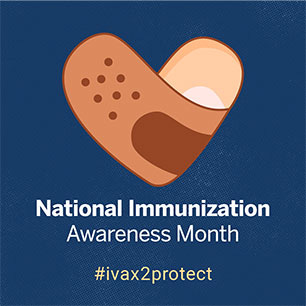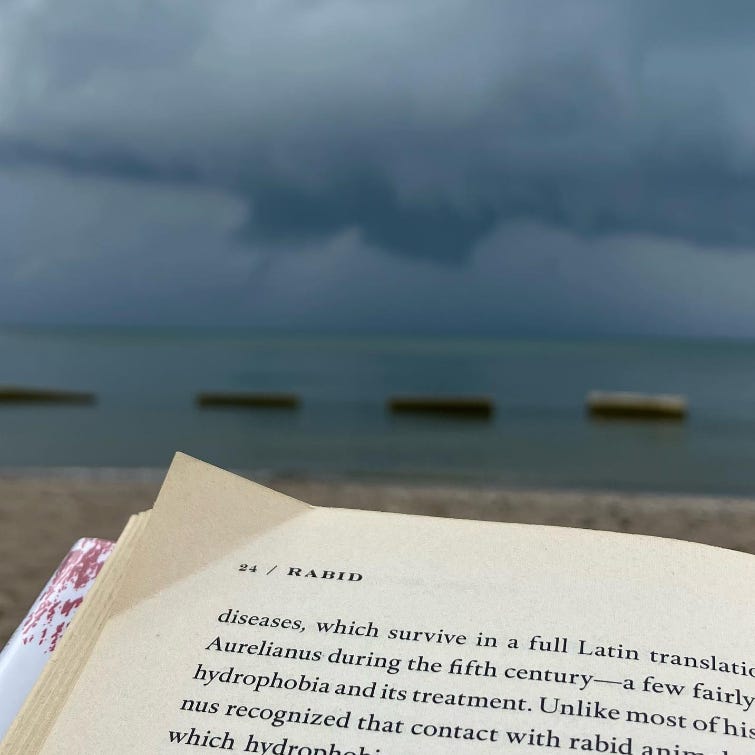Each August we celebrate National Immunization Awareness Month. Throughout the month those of us in the medical and public health communities highlight the importance of vaccinations for all people of all ages.
Vaccines save lives.
In celebration of National Immunization Awareness Month — I am putting together a series of posts for the month of August focused on the history of vaccines, how the immune system works, the anatomy of a clinical trial (to test new vaccines), herd immunity, and three of my favorite vaccine-preventable disease.
The goal of this series (which will include new posts each Wednesday in August) is to educate you about the immune system & immunity, how vaccines are developed, and the diseases that vaccines prevent. And with the knowledge gained, I want to empower you to become fully vaccinated AND an advocate for vaccines in your community.
Here is part #4 in the series celebrating National Immunization Awareness Month — HERD IMMUNITY.
(Be sure to check out part #1, part #2, and part #3 in this series)
At the beginning of the pandemic, the term herd immunity was introduced into our conversations as a promise to bring an end to the pandemic; stop the spread of COVID; eradicate the SARS-CoV-2 virus. The definition of herd immunity and the expectations that became associated in the news and our casual conversations were exaggerated. And unfortunately, the promise of herd immunity that was talked about so frequently in the early months of the COVID vaccination was broken.
To better understand herd immunity (aka population or community immunity), looking at the origin story of the term - how it came about, how it has been used in the past, key assumptions - is necessary. Today we are going to take a deep dive, starting in the 1800s, to understand what herd immunity is and the benefits it can provide. While vaccines do contribute to the creation of a group/population/herd of individuals who are protected from the disease despite not being vaccinated, the take-away message for today is simple —
Everyone (6 months and older) needs to be vaccinated.
In college, I came close to majoring in history. I ended up declaring Environmental Science as my major (which was the best decision for me obviously!) because my favorite professor offered to be my advisor (it made declaring my major as a shy, insecure 19-year-old a stress-free experience). I did earn a minor in history and I do think of myself as an amateur historian, especially when it comes to the history of disease. My interest in history is definitely tied to books - I love reading about history and historical novels (I am currently reading Rabid1).
Here’s a brief history of herd immunity from an epidemiological perspective —
The earliest record of herd immunity dates back to 1840 when William Farr (the father of medical statistics) noted that —
“The smallpox would be disturbed, and sometimes arrested, by vaccination, which protected part of the population.”
Similarly, in 1906 Sir William Hamer wrote —
“The number of transmissions per measles case was a function of the number of susceptibles in the population.”
Both documented that the transmission of an infectious disease (one that spreads from person to person) would slow or even end when the number of individuals susceptible to the infectious agent decreased. When more people are immune (sustained immunity, not merely 90 days post-infection), the virus has fewer opportunities to infect individuals and continue to spread at epidemic rates.
The term HERD IMMUNITY was not coined until 1918 when a veterinarian wrote about an outbreak of “contagious abortions” in sheep and cattle. Side note — he was really talking about a herd of sheep and cattle. Hence the term HERD IMMUNITY. Dr. George Potter wrote this about a bacteria causing spontaneous abortions in cattle in the Journal of the American Veterinary Medical Association in 1918 —
“Abortion disease may be likened to a fire, which if new fuel is not consistently added, soon dies down. HERD IMMUNITY is developed, therefore, by retaining the immune cows, raising the calves, and avoiding the introduction of foreign (suscepticle or infected) cattle.”
The modern definition of HERD IMMUNITY — honestly, there are several definitions used throughout public health and clinical medicine. All three definitions (listed below) are rooted in the ideas noted by Farr, Hamer, and Potter that the risk of infection/disease among susceptible individuals (those without immunity) in a population is reduced by the presence and proximity of immune individuals. Meaning if you surround yourself with people who have immunity, you are unlikely to become ill or contract the disease even if you are susceptible.

The term “herd immunity” was not widely used by the public health or medical communities until relatively recently (the past 40 years or so). Herd immunity is associated with the increasing use of vaccines and discussions of disease eradication programs (think smallpox and polio). And to be clear, we are NOT having discussions about the eradication of COVID. It is simply not possible because the disease is zoonotic (for one thing). With COVID, we are talking about the prevention of severe illness and prevention of death. There are extra vaccine bonuses, such as reducing time of illness and period of contagiousness. That is it.
Since the 1980s, the public health community has known three important things about herd immunity —
Long-term interruption of disease transmission requires CONTINUAL vaccinations as long as the infection remains endemic in other communities. In terms of COVID-19, vaccinations must continue among all of those who are unvaccinated and we need to be looking to the future and thinking about new booster shots for those of us who are already up-to-date on our vaccinations. Our goal is to interrupt disease transmission - to a disease that prior to November 2019 not a single human being on Earth had immunity to. Herd immunity is never and will never be “one and done.” Nor is it something that just the vaccinated people do and the rest of the community benefits from. Community immunity starts to develop when we are all vaccinated. It is a collective action. We all must work together through vaccinations to prevent disease spread and severe illness.
Many difficulties surround the attainment of herd immunity to eradicate, eliminate, or stop the transmission of disease. Effective community-wide control of infectious diseases depends on multiple mitigation strategies, including vaccinations, vector control, and efforts to improve ventilation, nutrition, hygiene, sanitation, and education. To stop the spread of COVID-19 in our communities, not only do we all need to participate (collective action), but we need to participate through various methods of prevention. We need to get vaccinated AND mask AND wash our hands AND be cautious around the most vulnerable. This is about ALL OF US contributing to the work of public health. Cooperation is needed. #weareallpublichealth
At the start of a mass vaccination program, the likelihood of severe disease arising from the vaccine is ORDERS OF MAGNITUDE SMALLER than the risk of serious disease arising naturally. Do you hear that?!?! Getting vaccinated is actually safer than getting COVID-19. Your chances of severe disease, hospitalization, long-COVID, and death are exponentially higher if you contract COVID-19 than if you are vaccinated. The vaccine is safe.
What is the take-away message? Vaccines are safe and effective.
The COVID-19 vaccines were designed to protect individuals against severe disease, hospitalization, and death. When enough people are vaccinated against COVID-19, there will be community-wide impacts, namely disease transmission rates will begin to decline. Breaking chains of disease transmission through vaccinations (illustrated above) will decrease the number of cases AND provide additional protection for individuals, including individuals with compromised immune systems or infants under six months of age who cannot be vaccinated. But this will not occur until we 95% or more of the population is vaccinated and the speed at which the SARS-CoV-2 virus is mutating slows.
While choosing whether or not to get vaccinated is an individual choice — and please read my letter to my daughter about the vaccine or the one to my son if you are not vaccinated yet — everyone who is vaccinated is contributing to the greater good and improving our community’s health by reducing the stress on our healthcare system, decreasing deaths from COVID-19, protecting developing fetuses and newborns, and setting a standard that all vaccinations are needed by all people in order to create healthy communities.
And just to be clear — the COVID vaccine is not the only vaccine we should be talking about as our kids head back to school. We need to be ensuring that our kids are also vaccinated against polio, and are up-to-date on their MMR, tetanus, DTaP, and HPV vaccinations, among others. And we should all be making appointments to get our flu vaccinations now. I highly recommend getting your flu vaccine during the month of October.
And please remember… I'm immunity. We all need to be vaccinated in order to create healthy communities for all.

Have more questions? Please ask me. Or do you want your own I’m Immunity picture? Let me know. Happy to help you create your own.
Definitions of herd immunity — The proportion of immune individuals in a population. For example, where I live the proportion of individuals who are fully vaccinated for COVID-19 is approximately 48%. Meaning between ~5 people out of every 10 are vaccinated.
Threshold proportion of immune individuals that should lead to a decline in the number of new infections. Dr. Fauci was saying that we will need 70-85% of the population to be vaccinated before the total population (the herd) will be protected from the SARS-CoV-2 virus. We know now that aiming for herd immunity is (likely) unobtainable because of how easily, quickly, and dramatically the SARS-CoV-2 virus is mutating. Instead, we want the proportion of people who are immune to increase in order to reduce the stress on our healthcare system, decrease deaths from COVID-19, protect developing fetuses and newborns, and set a standard that all vaccinations are needed by all people in order to create healthy communities.
The pattern of immunity that should protect the population from new infection. Meaning that specific demographic and geographic groups with high levels of immunity will be less likely to see new infections.






